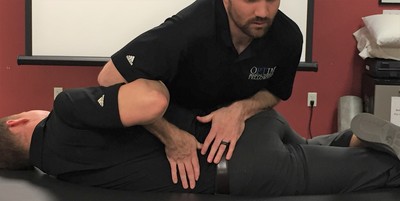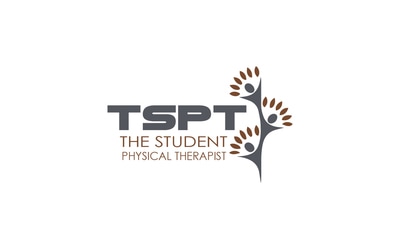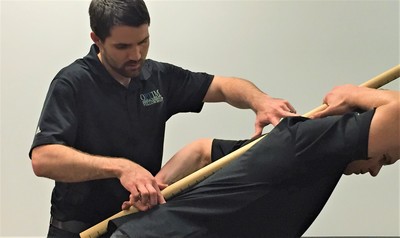- Home
- About Us
- TSPT Academy
- Online Courses
-
Resources
- Newsletter
- Business Minded Sports Physio Podcast
- Day in the Life of a Sports PT
- Residency Corner
-
Special Tests
>
-
Cervical Spine
>
- Alar Ligament Test
- Bakody's Sign
- Cervical Distraction Test
- Cervical Rotation Lateral Flexion Test
- Craniocervical Flexion Test (CCFT)
- Deep Neck Flexor Endurance Test
- Posterior-Anterior Segmental Mobility
- Segmental Mobility
- Sharp-Purser Test
- Spurling's Maneuver
- Transverse Ligament Test
- ULNT - Median
- ULNT - Radial
- ULNT - Ulnar
- Vertebral Artery Test
- Thoracic Spine >
-
Lumbar Spine/Sacroiliac Joint
>
- Active Sit-Up Test
- Alternate Gillet Test
- Crossed Straight Leg Raise Test
- Extensor Endurance Test
- FABER Test
- Fortin's Sign
- Gaenslen Test
- Gillet Test
- Gower's Sign
- Lumbar Quadrant Test
- POSH Test
- Posteroanterior Mobility
- Prone Knee Bend Test
- Prone Instability Test
- Resisted Abduction Test
- Sacral Clearing Test
- Seated Forward Flexion Test
- SIJ Compression/Distraction Test
- Slump Test
- Sphinx Test
- Spine Rotators & Multifidus Test
- Squish Test
- Standing Forward Flexion Test
- Straight Leg Raise Test
- Supine to Long Sit Test
-
Shoulder
>
- Active Compression Test
- Anterior Apprehension
- Biceps Load Test II
- Drop Arm Sign
- External Rotation Lag Sign
- Hawkins-Kennedy Impingement Sign
- Horizontal Adduction Test
- Internal Rotation Lag Sign
- Jobe Test
- Ludington's Test
- Neer Test
- Painful Arc Sign
- Pronated Load Test
- Resisted Supination External Rotation Test
- Speed's Test
- Posterior Apprehension
- Sulcus Sign
- Thoracic Outlet Tests >
- Yergason's Test
- Elbow >
- Wrist/Hand >
- Hip >
- Knee >
- Foot/Ankle >
-
Cervical Spine
>
- I want Financial Freedom
- I want Professional Growth
- I want Clinical Mastery
|
We recognize the difficulty in properly assessing low back pain patients to determine a proper treatment plan. Here's a complimentary Insider Access video showing you how to correctly perform segmental mobility assessment to determine the best course of treatment.
|
|
Crossed Straight Leg Raise Test
Purpose of Test: To test for the presence of a disc herniation.
Test Position: Supine.
Performing the Test: The examiner will passively flex the patient’s uninvolved hip while maintaining the knee in full extension. A positive test is considered when the patient reports reproduction of pain in the involved limb at 40 degrees of hip flexion or less in the uninvolved limb. The examiner should make note of the degree of hip flexion where the patient reported pain or reproduction of symptoms.
Diagnostic Accuracy: Sensitivity: .29, Specificity: .88 ("The test of Lasegue. Systematic review of the accuracy in diagnosing herniated discs").
Importance of Test: Disc herniations are a common problem in patients with low back pain. During this test the examiner is placing a traction force on the uninvolved nerve root, which places tension on the involved nerve root as well, reproducing the pain the patient presented with. Normally, patients can reach 70-90 degrees of hip flexion before a sensation of tightness occurs in the posterior thigh. If pain is felt significantly earlier, the patient could potentially be suffering from a disc herniation. (Interesting fact: The SLR primarily puts a stretch on the L5-S1 nerve root segment due to the nerve segments of the sciatic nerve). It should be noted that a painful, stretching, or other neurological symptom may be produced by this test as a result of neural tension due to adhesions while traveling throughout the body. Compare the results of the test with the pain for which the patient sought treatment. Also, utilize the angle at which symptoms were produced to help differentiate the source of the patient's pain.
Note: tests should only be performed by a properly trained health care practitioner.
Test Position: Supine.
Performing the Test: The examiner will passively flex the patient’s uninvolved hip while maintaining the knee in full extension. A positive test is considered when the patient reports reproduction of pain in the involved limb at 40 degrees of hip flexion or less in the uninvolved limb. The examiner should make note of the degree of hip flexion where the patient reported pain or reproduction of symptoms.
Diagnostic Accuracy: Sensitivity: .29, Specificity: .88 ("The test of Lasegue. Systematic review of the accuracy in diagnosing herniated discs").
Importance of Test: Disc herniations are a common problem in patients with low back pain. During this test the examiner is placing a traction force on the uninvolved nerve root, which places tension on the involved nerve root as well, reproducing the pain the patient presented with. Normally, patients can reach 70-90 degrees of hip flexion before a sensation of tightness occurs in the posterior thigh. If pain is felt significantly earlier, the patient could potentially be suffering from a disc herniation. (Interesting fact: The SLR primarily puts a stretch on the L5-S1 nerve root segment due to the nerve segments of the sciatic nerve). It should be noted that a painful, stretching, or other neurological symptom may be produced by this test as a result of neural tension due to adhesions while traveling throughout the body. Compare the results of the test with the pain for which the patient sought treatment. Also, utilize the angle at which symptoms were produced to help differentiate the source of the patient's pain.
Note: tests should only be performed by a properly trained health care practitioner.
References:
Deville W, van der Windt D, Dzaferagic A, et al. "The test of Lasegue. Systematic review of the accuracy in diagnosing herniated discs." Spine 200; 25: 1140-1147.
Deville W, van der Windt D, Dzaferagic A, et al. "The test of Lasegue. Systematic review of the accuracy in diagnosing herniated discs." Spine 200; 25: 1140-1147.
Copyright © The Student Physical Therapist LLC 2023




